 List of Insurance Companies Logos and Names in Djibouti – World Insurance Companies Logos. By clicking on the logo of each insurer in DJIBOUTI can obtain a set of update information that each insurer is offered by the Internet.
List of Insurance Companies Logos and Names in Djibouti – World Insurance Companies Logos. By clicking on the logo of each insurer in DJIBOUTI can obtain a set of update information that each insurer is offered by the Internet.
List of Insurance Companies Logos and Names in Djibouti
List of Insurance Companies Logos and Names in Djibouti. Clicking on the logo of every insurer in Djibouti gives you access to all the information that the insurers has on its own website.

Health in Djibouti
Djibouti, a small country located in the Horn of Africa, faces several health challenges, but it has made progress in improving its healthcare system. Here is an overview of the healthcare situation in Djibouti:
- Healthcare Infrastructure: Djibouti has made significant investments in healthcare infrastructure, particularly in urban areas. The country has hospitals, health centers, and clinics that provide a range of healthcare services. However, access to healthcare facilities can still be limited in rural and remote areas.
- Access to Healthcare: Djibouti has made efforts to improve access to healthcare services. The government has implemented policies to ensure healthcare facilities are distributed across the country, and mobile clinics are deployed to reach underserved populations. However, access to healthcare remains a challenge, especially in remote areas where transportation infrastructure is limited.
- Disease Burden: Djibouti faces a high burden of communicable diseases, including malaria, tuberculosis, and respiratory infections. Non-communicable diseases such as cardiovascular diseases and diabetes are also on the rise, partly due to lifestyle changes. Malnutrition is a concern, particularly among children under five years of age.
- Maternal and Child Health: Djibouti has made progress in improving maternal and child health indicators. The country has seen a reduction in maternal and child mortality rates. However, challenges remain, including access to quality antenatal care, skilled birth attendants, and postnatal care services.
- Health Workforce: Djibouti faces a shortage of healthcare professionals, particularly in specialized fields. Many skilled healthcare workers leave the country for better opportunities abroad, leading to a brain drain. The government has been working to address this issue by investing in healthcare education and training programs.
- Healthcare Financing: Djibouti has made efforts to increase healthcare spending and expand health insurance coverage. The government, along with international partners, is working to improve healthcare financing and reduce out-of-pocket expenses for individuals seeking medical services.
Check out more insurance company logos in African Insurance Companies Logos.
Djibouti, Africa – World Insurance Companies Logos


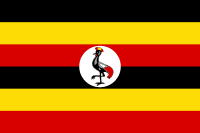
 List of Insurance Companies Logos and Names in Uganda – World Insurance Companies Logos. By clicking on the logo of each insurer, one can obtain a set of update information that each insurer offers via the Internet.
List of Insurance Companies Logos and Names in Uganda – World Insurance Companies Logos. By clicking on the logo of each insurer, one can obtain a set of update information that each insurer offers via the Internet.

 Tunisia, Africa – World Insurance Companies Logos. By clicking on the logo of each insurance company, one can obtain a set of update information that each insurer is offered via Internet.
Tunisia, Africa – World Insurance Companies Logos. By clicking on the logo of each insurance company, one can obtain a set of update information that each insurer is offered via Internet.
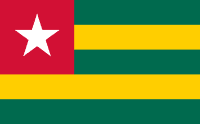
 Togo, Africa – World Insurance Companies Logos. By clicking on the logo of each insurance company one can get a set of updates of the information that each insurer is offered by the Internet.
Togo, Africa – World Insurance Companies Logos. By clicking on the logo of each insurance company one can get a set of updates of the information that each insurer is offered by the Internet.
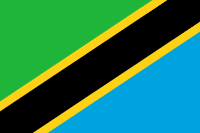
 List of Insurance Companies Logos and Names in Tanzania – World Insurance Companies Logos. By clicking on the logo of each insurance company that operates in this country, one can obtain a lot of knowledge of considerable importance on all kinds of insurance issues, and also their telephone numbers, addresses and prices which each insurer offers via the Internet.
List of Insurance Companies Logos and Names in Tanzania – World Insurance Companies Logos. By clicking on the logo of each insurance company that operates in this country, one can obtain a lot of knowledge of considerable importance on all kinds of insurance issues, and also their telephone numbers, addresses and prices which each insurer offers via the Internet.
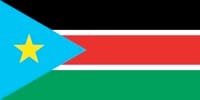
 List of Insurance Companies Logos and Names in South Sudan – World Insurance Companies Logos. By clicking on the logo of each insurance company that operates in (SS) can access from a single place to its website, finding there a wealth of knowledge of considerable importance on all kinds of insurance questions as well as their telephone numbers, addresses and prices that each insurer offers online.
List of Insurance Companies Logos and Names in South Sudan – World Insurance Companies Logos. By clicking on the logo of each insurance company that operates in (SS) can access from a single place to its website, finding there a wealth of knowledge of considerable importance on all kinds of insurance questions as well as their telephone numbers, addresses and prices that each insurer offers online. 

 List of Insurance Companies in Sudan – World Insurance Companies Logos. By clicking on the logo of each insurer can obtain a set of update information that each insurer offers via the Internet.
List of Insurance Companies in Sudan – World Insurance Companies Logos. By clicking on the logo of each insurer can obtain a set of update information that each insurer offers via the Internet.
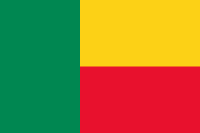


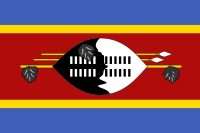
 List of Insurance Companies Logos and Names in Eswatini – World Insurance Companies Logos. Click on the logo image of the insurance companies to get a lot of up-to-date information offering to each SWAZILAND insurer. We want to help you get the best assurance.
List of Insurance Companies Logos and Names in Eswatini – World Insurance Companies Logos. Click on the logo image of the insurance companies to get a lot of up-to-date information offering to each SWAZILAND insurer. We want to help you get the best assurance. 
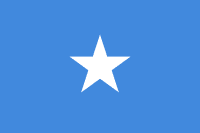
 List of Insurance Companies Logos and Names in Somalia – World Insurance Companies Logos. A company’s symbol means its brand. In insurance, the logo image is immediately recognizable and allows the client to associate the company with the useful qualities like confidence, the fair price and many other essential questions about the task of finding the best insurance. Click on the logo image of the insurance companies to get a lot of up-to-date information for every insurer in SOMALIA. We would like to help you find the best assurance.
List of Insurance Companies Logos and Names in Somalia – World Insurance Companies Logos. A company’s symbol means its brand. In insurance, the logo image is immediately recognizable and allows the client to associate the company with the useful qualities like confidence, the fair price and many other essential questions about the task of finding the best insurance. Click on the logo image of the insurance companies to get a lot of up-to-date information for every insurer in SOMALIA. We would like to help you find the best assurance.